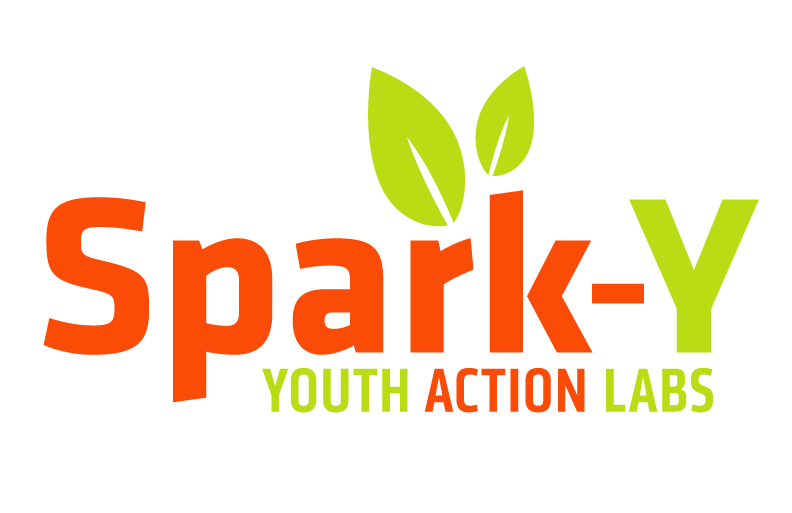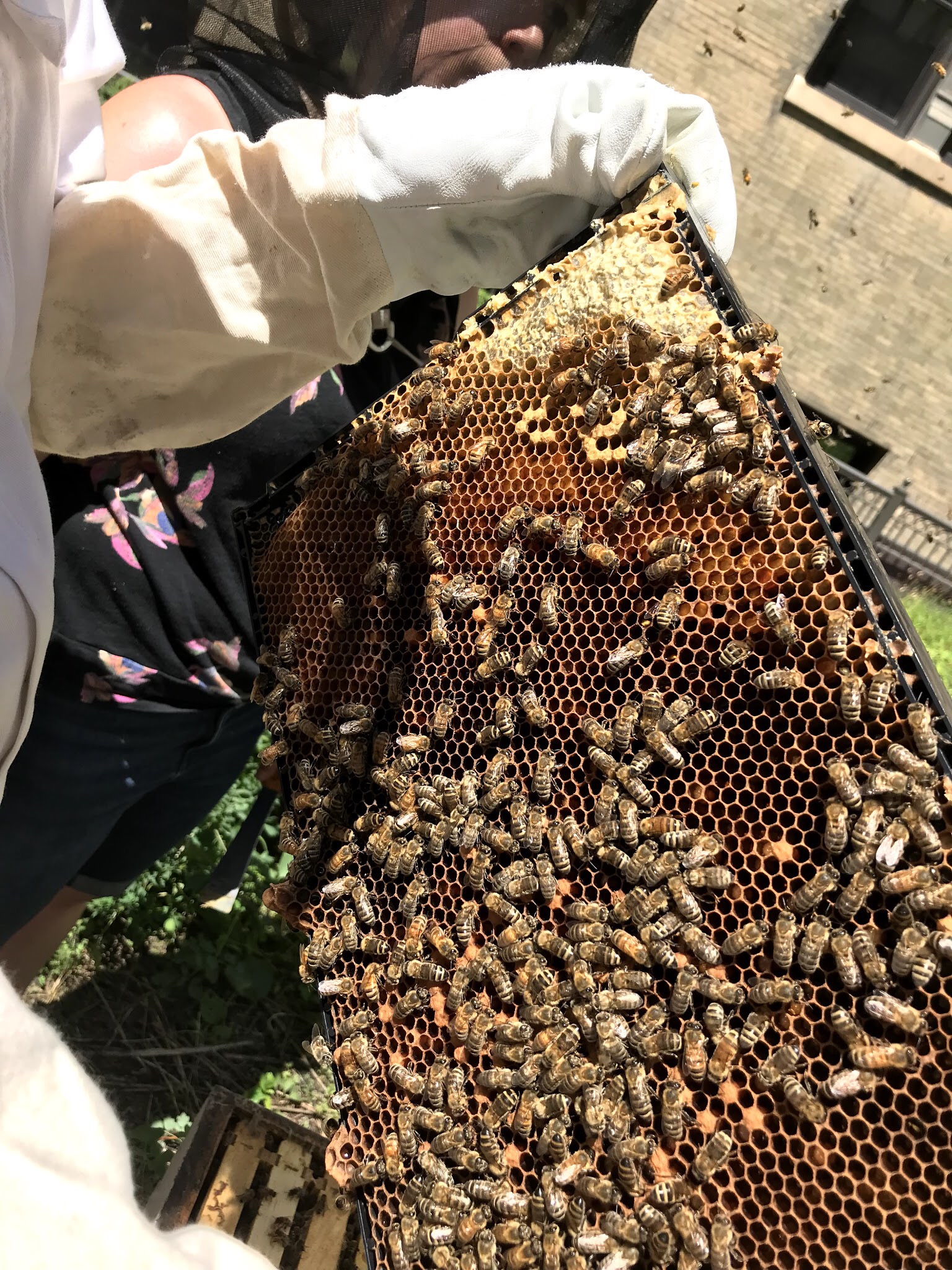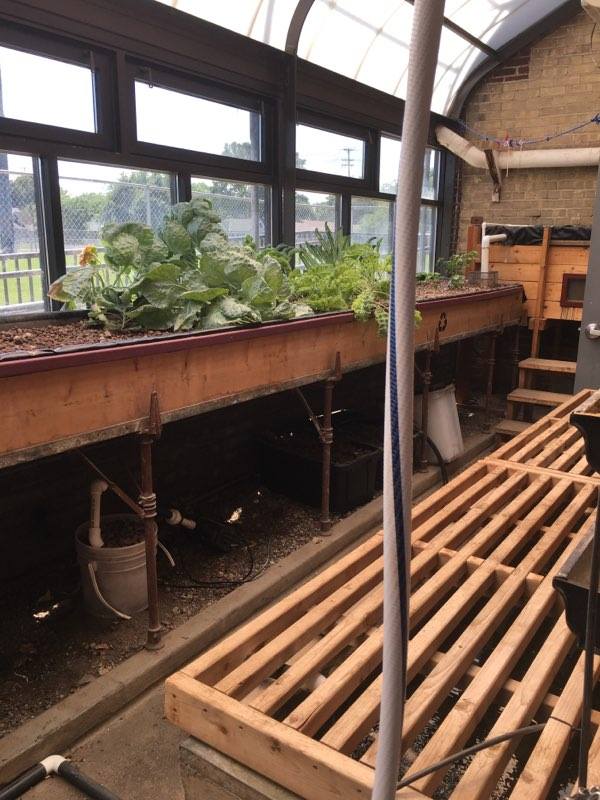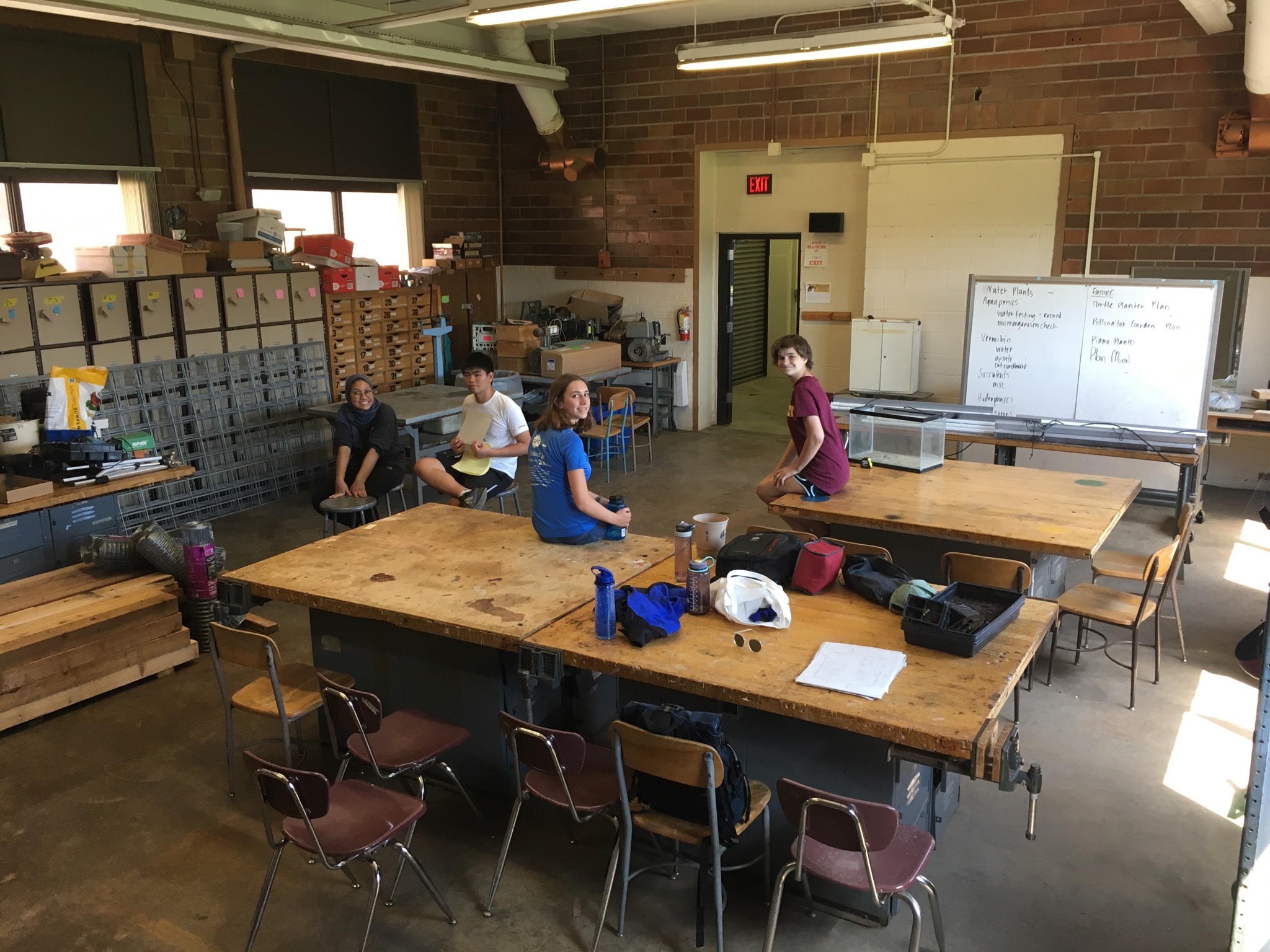The following blog post was written by: Joyce Wong
Additional Team Members: Emi Haus, Simon Graves, Kyla Brown
Spark-Y 2019 Summer Internship City Hall Team
Have you ever been so loyal to someone, you’d be willing to die for them? Do you think when you’re born, you have a destiny or purpose? Have you ever flown for what felt like forever in order to fulfill a job to the best of your ability?
If you said yes to any of these, you and bees may have more in common than you think. Bees are incredibly complex creatures, and are very intricate. For the past few weeks, our team at Spark Y has been working with these creatures across Minneapolis and at City Hall. In addition to receiving beekeeping training for maintaining hives, we’ve also learned so much about green roofs, the fear of bees, and how our actions impact ecosystems.
City Hall
Located at the heart of Minneapolis is a leading example of sustainability: the green roof. Not only does the green roof last longer than traditional roofs, they also provide insulation and absorption of heat; This, in return, lowers energy costs and greenhouse emissions. Our intern team has been lucky enough to visit this roof and the bees that live on it for several weeks. Originally, I had been surprised to find bees in such a central part of the city. However, as the environmental worker at City Hall explained, having bees closer to the cities shows that we can live in harmony with pollinators. They’re not something to be feared.
As for our beekeeping training, that was a very unique experience. We learned about the thousands of incredible things to look out for when examining a hive. For example, we learned about how baby bees can be seen breaking out of their cocoons when being born. Also, how bees will cap off their “section” when it’s filled to the brim with sweet honey. Lastly, we learned about how the worker bees will clean the queen with undying patience as their queen lays 1000-2000 eggs per day!
After understanding all of this, I started becoming fascinated with the way bee colonies function. Although I hadn't previously been remotely interested in bees (expect for when one flew near and my friends started shrieking), receiving training for beekeeping for several weeks has shifted my perspective.
All In the Head: Kyla’s Fear of Bees
Before this internship, Kyla, one of our team members, has always thought bees were incredibly scary. She said the reason for this was that lots of TV shows portray bees as terrifying animals that try to sting people. As a result, even though she hasn’t been stung before, she always believed they were “just a pain in the butt.”
To clarify, the fear of bees and bee stings is actually very common. To be fair, it’s normal to be worried about your health, especially when society constantly paints a negative picture of a specific animal. In some instances, people may even develop apiphobia, where the fear of bees affects their daily lives.
Now, when we first got onto the green roof, Kyla said she was very anxious. Being the honest person that she is, she said the bees were “worse than I’d expected.” Just seeing the bees themselves made her want to stay far away.
That day, although she didn’t end up suiting up, she had taken a crucial step towards overcoming her fear of bees. It’s important to remember changes never happen overnight, whether it’s in sustainability, entrepreneurship, or even overcoming fears. Therefore, persevering through your struggles is one of the most valuable skills a person can obtain.
The following week, Kyla took not a step, but a giant leap. Not only did she put on the bee suit, she stepped onto the green roof and was close enough to hear the bees sing! When asked about how she felt, she said, “to be completely honest... not good. Watching them swarming, buzzing around, and crawling on top of each other...it was so scary.”
Despite this, she tried to reassure herself by thinking “I got this. I’ll be fine.” That really helped her. Whereas the first time, she was trying to get as far away as possible, she was able to get close to the bee boxes the second time. Of course, making progress is a gradual process, and although she had to get out of the suit after ten minutes, she’s now more willing to learn about bees.
When asked about what she would tell others who are scared of bees too, she said, “You need to have more faith in yourself. Now that I know much more info, and that bees don't like to sting people because they actually die...I’m not as scared.” She continued, “The hype isn't real. You’re not gonna get stung unless you’re putting bees in danger. It’s all in the head.”
All in all, Kyla’s fear of bees is one of the most common fears in the US. Many people grow up with the stereotype of bees being ruthless killers. However, on closer examination, it is clear that bees have been misinterpreted. Not only do they contribute to our food sources, they also help with entire ecosystems! In order to break down this irrational fear, slow exposure to bees can help people develop a positive correlation to these amazing pollinators.
Pesticide Usage
Recently, the increased amount of pesticides in urban areas has been detrimental to many of our pollinator friends. Initially, our team hadn’t been aware of this problem. Through this internship however, we’ve realized how immediate the consequences of ignorance can be.
For instance, when we collaborated with Erin Rupp, the founder and executive director of Pollinate Minnesota, she explained to us, “Last year, 40% of honeybees died in the winter, the second highest rate ever recorded.”
Unfortunately, honeybees are not the only ones.
Another species of bees, the Rusty Patched Bumblebees, has been dying at an exponential rate. Though once abundant, they, in addition to many other solitary bees, have been placed on the endangered species list. Clearly, pesticides have harmed many creatures.
Now, many people say that losing bees over the winter is expected. They may say farmers have adopted a practice which allows them to replenish the supply of dead bees every year.
Despite this stance, it is clear that replacing honeybees is a costly process that doesn’t address the real obstacle. It focuses on repairing a problem (pesticides) that shouldn’t occur in the first place. In addition, this stance fails to acknowledge that solitary bees are in danger.
Understanding this is crucial because when these bees pollinate wildflowers, they produce food sources for many insects and birds. This in turn, contributes to the entire ecosystem. With the declining populations of pollinators due to pesticides, not only would we lose our food sources, we would also destroy complete ecosystems. It holds the domino effect. Do you want to be a contributor to this problem? Or do you want to help solve this epidemic?
How Can You Help?
For one exhausted bee traveling miles across the bustling city, planting native flowers can make all the difference. Some beautiful flowers you could plant include: the Black Eyed Susan (as shown below), the Stout Blue-Eyed Grass, and the Sky Blue Aster.
As our team members prepare to spread information to others through an interactive workshop, we are incredibly grateful for this opportunity to develop professional skills of communication. In addition, Kyla’s experience made us realize how, initial discomfort can lead to growth. Finally, learning about the various types of pollinators has helped us realize how impactful knowledge is, and how it can empower youth to take action and create change.




















